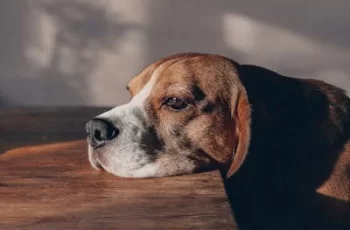Bringing a new puppy into your home is an exciting time, but it also comes with responsibilities—one of the most important being potty training. Potty training your puppy is crucial for a harmonious household, and understanding the different methods can make the process smoother and quicker. Here’s a comprehensive guide to the various methods of puppy potty training, along with tips to help you choose the right approach for your furry friend.
1. Crate Training
What It Is: Crate training involves using a crate as a designated space for your puppy when you’re not able to supervise them closely. Dogs naturally avoid soiling their sleeping area, making the crate an effective tool for potty training.
How It Works:
- Choose the Right Crate: The crate should be large enough for your puppy to stand, turn around, and lie down, but not so large that they can eliminate in one corner and sleep in another.
- Introduce the Crate: Make the crate a positive space by placing comfortable bedding and toys inside. Gradually introduce your puppy to the crate, encouraging them to enter with treats and praise.
- Establish a Routine: Take your puppy outside to eliminate right after they come out of the crate, and offer praise when they do their business outside.
- Gradual Time Increase: Start with short periods in the crate and gradually increase the time as your puppy becomes more comfortable.
Best For: Puppies that thrive on routine and structure, and for owners who are able to provide regular potty breaks.
2. Paper Training
What It Is: Paper training, or pee pad training, involves teaching your puppy to use a designated spot indoors, typically covered with newspapers or pee pads, for elimination.
How It Works:
- Designate a Spot: Choose an area in your home where you want your puppy to eliminate. Cover the area with newspapers or pee pads.
- Encourage Use: Place your puppy on the paper or pad after meals, naps, or when they show signs of needing to go. Praise them when they use the spot correctly.
- Gradual Transition: Once your puppy consistently uses the paper or pad, slowly move it closer to the door. Eventually, transition the training outdoors.
Best For: Apartment dwellers, those with limited access to outdoor spaces, or in situations where the puppy is home alone for extended periods.
3. Scheduled Potty Breaks
What It Is: This method revolves around taking your puppy outside on a strict schedule to prevent accidents and establish a routine.
How It Works:
- Set a Schedule: Take your puppy outside first thing in the morning, after meals, after naps, and before bedtime. Consistency is key.
- Use Commands: Use a consistent command, such as “go potty,” when you take your puppy outside. Reward them with praise and treats when they eliminate.
- Monitor Food and Water: Keep a regular feeding schedule and monitor water intake to predict when your puppy will need to go.
Best For: Owners who can maintain a consistent routine and prefer to take their puppy outside for every potty break.
4. Bell Training
What It Is: Bell training teaches your puppy to ring a bell by the door to signal that they need to go outside to eliminate.
How It Works:
- Hang a Bell: Hang a bell on the door that you use to take your puppy outside.
- Introduce the Bell: Every time you take your puppy out, gently touch their paw or nose to the bell so it rings. Open the door immediately after and take them outside.
- Reinforce the Behavior: Over time, your puppy will learn to associate ringing the bell with going outside to potty. Praise and reward them when they do so.
Best For: Puppies that quickly learn associations and enjoy interactive training methods.
5. Grass Patch Training
What It Is: This method involves using a patch of artificial grass or a portable potty system indoors, mimicking outdoor conditions for your puppy.
How It Works:
- Choose a Grass Patch: Purchase a grass patch or a portable potty system designed for indoor use.
- Introduce the Patch: Place your puppy on the patch after meals, naps, or when they show signs of needing to go.
- Praise and Reward: Offer praise and a treat when your puppy uses the grass patch correctly.
Best For: Apartment dwellers, those in urban settings, or when outdoor access is limited.
Tips for Successful Puppy Potty Training
- Consistency is Key: Regardless of the method you choose, consistency is crucial. Stick to a routine, use the same commands, and always praise and reward your puppy for correct behavior.
- Be Patient: Accidents will happen, especially in the early stages. Remain patient and avoid punishment, as it can confuse your puppy and set back the training process.
- Watch for Signs: Learn to recognize the signs that your puppy needs to eliminate, such as sniffing the ground, circling, or whining.
- Use Positive Reinforcement: Always use positive reinforcement, such as treats and praise, to encourage good behavior. This builds trust and helps your puppy learn faster.
- Clean Up Accidents Properly: Use an enzymatic cleaner to remove the scent of accidents from your home, as lingering odors can attract your puppy back to the same spot.
Conclusion
Potty training your puppy may require time and effort, but with the right method and a little patience, you’ll set the foundation for a well-behaved and happy dog. Choose the approach that best suits your lifestyle and your puppy’s temperament, and remember that consistency and positive reinforcement are your best tools for success.
By understanding and applying these methods, you’ll be well on your way to a fully potty-trained puppy, ready to enjoy a clean and happy home.
4o


